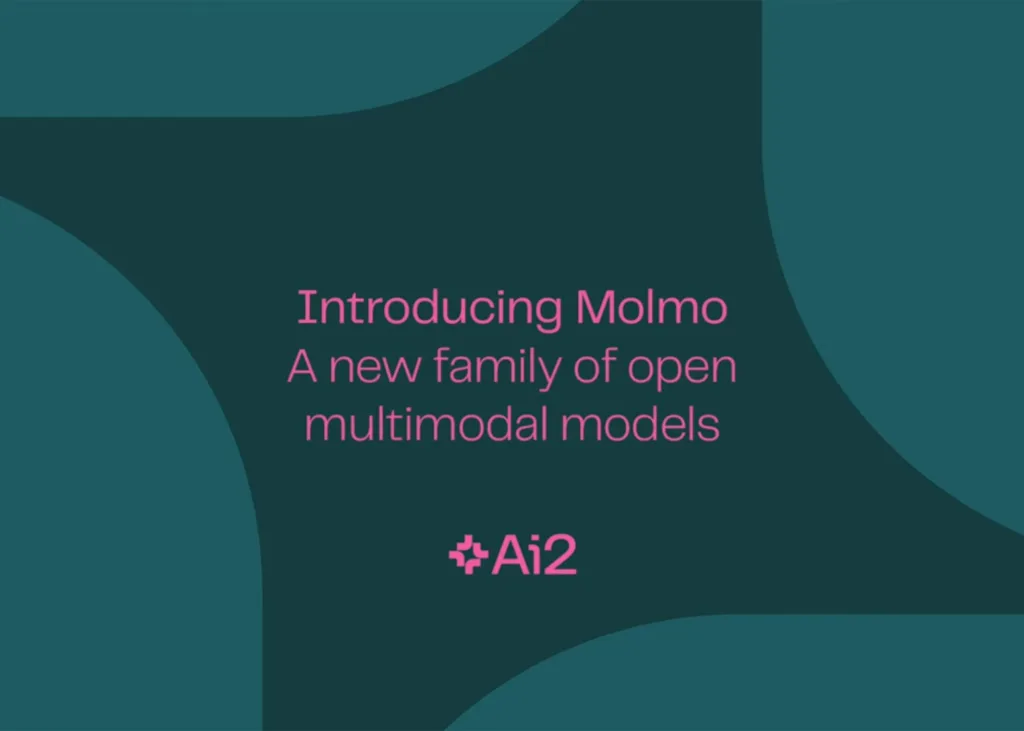In the ever-evolving landscape of artificial intelligence, the Allen Institute for AI (Ai2) has introduced a groundbreaking model known as Molmo (Multimodal Open Language Model). This multimodal AI model is designed to seamlessly integrate and process both visual and textual data, marking a significant leap forward in the field of AI. Molmo’s capabilities promise to transform various industries by enhancing user interactions, accessibility, and analytical insights.
Capabilities of Molmo
Molmo stands out due to its impressive array of capabilities:
- Image and Text Integration: Molmo can simultaneously process and combine information from images and text. This allows it to understand and describe scenes, identify objects, and grasp context from both visual and textual inputs.
- Object Detection and Description: The model excels at identifying and describing objects within images. This capability is crucial for applications in autonomous driving, medical imaging, and more.
- Interactive Capabilities: Molmo can interact with users by pointing to specific elements on a screen or providing detailed explanations about visual content. This makes it an invaluable tool for educational purposes and interactive applications.
- Natural Language Understanding: Beyond visual data, Molmo is adept at understanding and generating human-like text. This makes it suitable for tasks such as content creation, summarization, and translation.
- Multimodal Reasoning: Molmo can reason across different types of data, enabling it to answer complex questions that require understanding both images and text.
- Enhanced Accessibility: By combining visual and textual data, Molmo can create more accessible content for users with disabilities. For instance, it can generate descriptive text for images to aid visually impaired users.
Must read: AI21 Unveils Jamba 1.5 Family: A Leap Forward in AI Modeling
Applications of Molmo
The versatility of Molmo opens up a wide range of applications across various fields:
- Autonomous Driving: Molmo’s ability to detect and describe objects in real-time can enhance the safety and efficiency of autonomous vehicles.
- Medical Imaging: In healthcare, Molmo can assist in analyzing medical images, leading to more accurate diagnoses and treatment plans.
- Education: Molmo can be used to create interactive educational tools that provide detailed explanations and visual aids, making learning more engaging.
- Content Creation: Writers and content creators can leverage Molmo’s natural language understanding to generate high-quality content, summaries, and translations.
- Accessibility: Molmo’s capabilities can significantly improve accessibility by generating descriptive text for images, making digital content more inclusive.
Impact on Technology and Society
Molmo’s introduction is poised to have a profound impact on technology and society. By enhancing user interactions and accessibility, Molmo can make technology more inclusive and user-friendly. Its ability to provide advanced analytical insights can drive innovation in various fields, from autonomous driving to healthcare.
Moreover, Molmo’s multimodal reasoning capabilities can lead to more sophisticated AI systems that understand and respond to complex queries, making technology more intuitive and responsive to human needs.
Future Prospects
Looking ahead, the future prospects for Molmo are incredibly promising. As AI technology continues to advance, the model is likely to evolve, incorporating even more sophisticated capabilities. Future developments may include enhanced real-time processing, deeper integration with other AI systems, and broader applications across new industries.
In conclusion, Molmo represents a significant milestone in the field of AI. Its ability to integrate and process visual and textual data opens up new possibilities for innovation and accessibility. As Molmo continues to develop, it is set to play a pivotal role in shaping the future of AI and its applications in our daily lives.



